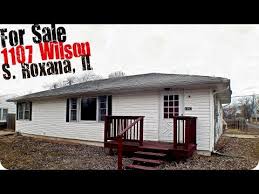California Court Rules: No Jurisdiction Over Foreign Parent Corporations
By admin on August 8, 2014
Leave a comment
This week in Young v. Daimler AG, the California Court of Appeal held that there is no general personal jurisdiction over foreign companies in California whose only “connections” to the state are the activities of its legally separate but wholly owned subsidiaries. This is the first appellate case in California applying the U.S. Supreme Court’s January 2014 decision on this issue, Daimler AG v. Bauman (2014) 134 S.Ct. 746.
Young is particularly significant because it abrogates an entire theory of general jurisdiction law in California — the “representative services doctrine” — and gives out-of-state and foreign defendants welcome protection from lawsuits in California, even if they have in-state subsidiaries doing substantial business. It is important to note that this case did not involve any other theory of jurisdiction, such as an “alter ego”-type of theory holding a foreign parent subject to jurisdiction in California, where its corporate formality-ignoring subsidiary operates.
The representative services doctrine, set forth in Sonora Diamond Corp. v. Superior Court (2000) 83 Cal.App.4th 523, held that general personal jurisdiction could be asserted over a foreign defendant if its in-state subsidiary performed “a function that is compatible with, and assists the parent in pursuit of, the parent’s own business.” In other words: “[I]f a parent uses a subsidiary to do what it otherwise would have done itself, it has purposely availed itself of the privilege of doing business in the forum. Jurisdiction over the parent is therefore proper.” This may describe many foreign parent-domestic subsidiary relationships, but the U.S. Supreme Court held in Bauman that it does not confer personal jurisdiction, and Young agrees.
This is not the only such case before the Court of Appeal on this very issue — Daimler AG v. Superior Court (Pierson) is scheduled for oral argument on August 18, 2014. Young and Pierson involve the same question, arising out of the same fact pattern: May a California state court exercise general personal jurisdiction over a foreign company, solely due to the in-state activities of its subsidiaries? Young, applying the U.S. Supreme Court’s Bauman decision, answered “no.” The California Supreme Court unanimously ordered in March 2014 that the Pierson plaintiffs show cause why service of summons on Daimler should not be quashed in light of Bauman. Pierson is before a different Court of Appeal district (the Third, in Sacramento) than was Young (the First, in San Francisco), but Pierson is likely to be decided the same way.
Young and Pierson are product liability cases involving Jeep vehicles manufactured by DaimlerChrysler before Chrysler’s split from Daimler AG and bankruptcy. Both plaintiffs pursued their claims against Daimler AG as the ultimate parent of DaimlerChrysler at the time the vehicles in question were manufactured.
In Young, the plaintiffsasked the court to apply the Ninth Circuit’s then-current decision in Bauman v. DaimlerChrysler Corp. (2011) 644 F.3d 909, which held that general jurisdiction over Daimler AG was appropriate in California because of the extensive activities of its indirect subsidiary Mercedes-Benz USA. This case cited the representative services doctrine as the source of its holding, that is, Mercedes-Benz USA’s activities in California were so important to Daimler AG that general jurisdiction over Daimler AG was appropriate.
In reversing the Ninth Circuit, the U.S. Supreme Court held in Bauman that the representative services doctrine “rested primarily on [the] observation that [American subsidiary] MBUSA’s services were ‘important’ to Daimler, as gauged by Daimler’s hypothetical readiness to perform those services itself if MBUSA did not exist. Formulated this way, the inquiry into importance stacks the deck, for it will always yield a pro-jurisdiction answer[.] . . . The Ninth Circuit’s agency theory thus appears to subject foreign corporations to general jurisdiction whenever they have an in-state subsidiary or affiliate, an outcome that would sweep beyond even the ‘sprawling view of general jurisdiction’ we rejected in” other cases.
Applying Bauman, Young affirmed the trial court’s grant of Daimler AG’s motion to quash service of summons and agreed that because Daimler AG itself did not do business in California, there was no general personal jurisdiction: “In our view, appellant’s argument impermissibly ‘elide[s] the essential difference between case-specific and all-purpose (general) jurisdiction. . . . Indeed, the test endorsed in Bauman . . . whether a foreign defendant is ‘essentially at home in the forum state’—focuses on the defendant’s significant corporate presence in the forum.”
Young recognized that this means the representative services doctrine is essentially dead: “While the Bauman II Court questioned the formulation and application of the Ninth Circuit’s agency test [the representative services doctrine], in the end it assumed agency and still concluded that MBUSA’s California contacts were insufficient to confer general jurisdiction in California.” This is hugely important to multistate and international businesses. Such defendants cannot be sued in California, even if their subsidiaries do substantial business in California. Young is a clear rejection of the representative services doctrine and the opinion did not limit the application of its decision to the particular facts of the case before it.
Out-of-state and foreign businesses participating in California’s economy through subsidiaries are common. Such businesses must remain careful to ensure that their subsidiaries observe corporate formalities and remain legally separate. Overall, however, Young brings California general jurisdiction law in line with U.S. Supreme Court precedent and will make establishing jurisdiction over out-of-state and foreign defendants significantly more difficult in the future.

 Timothy Bostic’s relatives sued Georgia-Pacific and 39 other asbestos-related product manufacturers claiming that Bostic’s fatal mesothelioma was caused by exposure to their products. At trial in 2006, the jury allocated 25 percent of the causation to Knox Glass Co., the decedent’s former employer, and 75 percent to Georgia-Pacific. An amended judgment awarded plaintiffs over $11 million in compensatory and punitive damages. The Court of Appeals reversed the trial court’s decision holding that the plaintiffs failed to prove that the exposure to Georgia-Pacific’s asbestos was a substantial factor in bringing about Bostic’s death.
Timothy Bostic’s relatives sued Georgia-Pacific and 39 other asbestos-related product manufacturers claiming that Bostic’s fatal mesothelioma was caused by exposure to their products. At trial in 2006, the jury allocated 25 percent of the causation to Knox Glass Co., the decedent’s former employer, and 75 percent to Georgia-Pacific. An amended judgment awarded plaintiffs over $11 million in compensatory and punitive damages. The Court of Appeals reversed the trial court’s decision holding that the plaintiffs failed to prove that the exposure to Georgia-Pacific’s asbestos was a substantial factor in bringing about Bostic’s death. In a decision issued on May 2, 2014, the Second Circuit held, in
In a decision issued on May 2, 2014, the Second Circuit held, in  In exonerating the 9/11 defendants on the basis of the "act or war" defense, the court determined that the attacks were the "sole cause" of the alleged release, comparing the situation to the application of CERCLA’s "act of God" affirmative defense to a tornado. In her article in the Bloomberg BNA Toxics Law Reporter on May 8, 2014 (29 TXLR 407) titled "
In exonerating the 9/11 defendants on the basis of the "act or war" defense, the court determined that the attacks were the "sole cause" of the alleged release, comparing the situation to the application of CERCLA’s "act of God" affirmative defense to a tornado. In her article in the Bloomberg BNA Toxics Law Reporter on May 8, 2014 (29 TXLR 407) titled " When a homeowner brings a multi-count toxic tort case alleging that a corporate defendant’s discharge of toxic substances from its facility contaminated his property, the diminution of property value claim is often the only element of damages subject to objective determination. Or is it?
When a homeowner brings a multi-count toxic tort case alleging that a corporate defendant’s discharge of toxic substances from its facility contaminated his property, the diminution of property value claim is often the only element of damages subject to objective determination. Or is it? as well. Because plaintiffs admitted that they knew the groundwater under their properties was contaminated with TCE when they bought their homes, remediating the property to “if clean” levels would improve the property beyond what plaintiffs purchased and give them a windfall. According to the court, the proper valuation analysis should take into account what plaintiffs knew of the condition of the property at the time of purchase.
as well. Because plaintiffs admitted that they knew the groundwater under their properties was contaminated with TCE when they bought their homes, remediating the property to “if clean” levels would improve the property beyond what plaintiffs purchased and give them a windfall. According to the court, the proper valuation analysis should take into account what plaintiffs knew of the condition of the property at the time of purchase. In examining the “interviews/surveys” approach, the court questioned why McHale doubled the discount from 20% to 40% without explaining why the realtors would not have taken into consideration the other factors McHale discussed when giving their responses. Presumably, the discounted selling price already took into consideration any difficulty in obtaining financing and any increased marketing costs. Therefore, these considerations should not be counted twice in coming up with a discount.
In examining the “interviews/surveys” approach, the court questioned why McHale doubled the discount from 20% to 40% without explaining why the realtors would not have taken into consideration the other factors McHale discussed when giving their responses. Presumably, the discounted selling price already took into consideration any difficulty in obtaining financing and any increased marketing costs. Therefore, these considerations should not be counted twice in coming up with a discount. Pursuant to the
Pursuant to the  empirical proof that punitive damages awards have contributed to bankruptcies, she overlooks the reality that defendants make oversized settlements based upon their potential exposure and that the threat of punitive damages increases that exposure calculus exponentially. One only need read the
empirical proof that punitive damages awards have contributed to bankruptcies, she overlooks the reality that defendants make oversized settlements based upon their potential exposure and that the threat of punitive damages increases that exposure calculus exponentially. One only need read the  Every plaintiff lawyer has a duty to maximize his client’s recovery in a personal injury action, particularly when the client is suffering from a horrific illness like mesothelioma. If the lawyer believes he can elicit a more attractive offer from a defendant by threatening to seek punitive damages, how could he not do so within the bounds of ethical conduct? Justice Heitler notes that the use of asbestos peaked in the 1960’s and 1970’s when asbestos was used in the more than 3,000 industrial applications. Today, there are probably none. If that is the case, how can a plaintiff make a “valid reference to corrective action” in any demand for punitive damages?
Every plaintiff lawyer has a duty to maximize his client’s recovery in a personal injury action, particularly when the client is suffering from a horrific illness like mesothelioma. If the lawyer believes he can elicit a more attractive offer from a defendant by threatening to seek punitive damages, how could he not do so within the bounds of ethical conduct? Justice Heitler notes that the use of asbestos peaked in the 1960’s and 1970’s when asbestos was used in the more than 3,000 industrial applications. Today, there are probably none. If that is the case, how can a plaintiff make a “valid reference to corrective action” in any demand for punitive damages? practical result of raising the bar for class certification and leveling the playing field for corporate defendants. Until recently, however, it was unclear what impact this anti-trust decision would have on toxic tort litigation.
practical result of raising the bar for class certification and leveling the playing field for corporate defendants. Until recently, however, it was unclear what impact this anti-trust decision would have on toxic tort litigation.  The Court held that "mere assertion by class counsel that common issues predominate is not enough. That would be too facile. Certification would be virtually automatic. And so Rule 23 does not set forth a mere pleading standard….Rather, when factual disputes bear on issues vital to certification (that is, to whether the suit should be allowed to be litigated as a class action), such as predominance, the court must receive evidence . . . and resolve the disputes before deciding whether to certify the case." (emphasis added) In reviewing the record below, the court stated that it was not even clear that plaintiffs "have identified a common issue."
The Court held that "mere assertion by class counsel that common issues predominate is not enough. That would be too facile. Certification would be virtually automatic. And so Rule 23 does not set forth a mere pleading standard….Rather, when factual disputes bear on issues vital to certification (that is, to whether the suit should be allowed to be litigated as a class action), such as predominance, the court must receive evidence . . . and resolve the disputes before deciding whether to certify the case." (emphasis added) In reviewing the record below, the court stated that it was not even clear that plaintiffs "have identified a common issue." On March 3, 2014, FDA made available for comment a revised draft of its “
On March 3, 2014, FDA made available for comment a revised draft of its “ sales representative for Jazz Pharmaceuticals whom a federal district court jury found guilty of conspiring to introduce a “misbranded” drug into interstate commerce in violation of the FDCA.
sales representative for Jazz Pharmaceuticals whom a federal district court jury found guilty of conspiring to introduce a “misbranded” drug into interstate commerce in violation of the FDCA. The revised draft guidance does not include the same blanket prohibitions included in the earlier pre-Caronia guidance. Under the revised draft guidance, some highlighting and summarizing is permitted as long as it does not promote an off-label use or is misleading. Although FDA clearly still believes that it can regulate non-misleading speech, it has backed off somewhat (perhaps in light of Caronia), and sought to bolster its position by adhering closely to the statutory prohibitions in the FDCA.
The revised draft guidance does not include the same blanket prohibitions included in the earlier pre-Caronia guidance. Under the revised draft guidance, some highlighting and summarizing is permitted as long as it does not promote an off-label use or is misleading. Although FDA clearly still believes that it can regulate non-misleading speech, it has backed off somewhat (perhaps in light of Caronia), and sought to bolster its position by adhering closely to the statutory prohibitions in the FDCA.